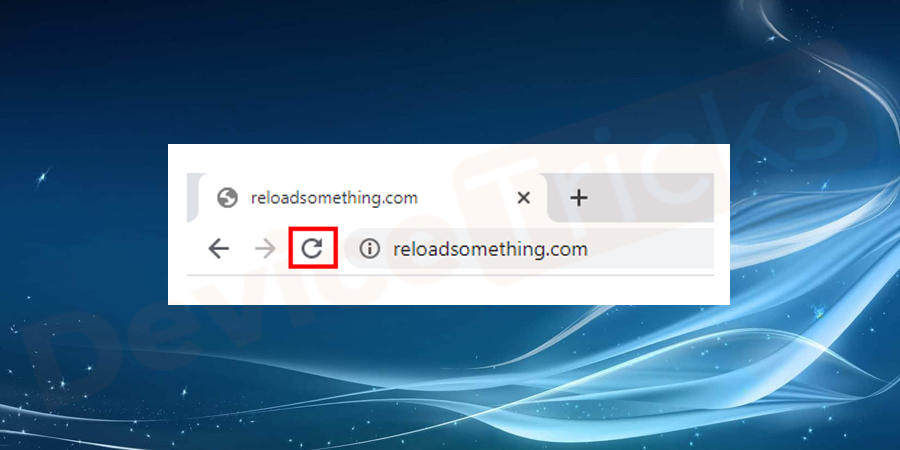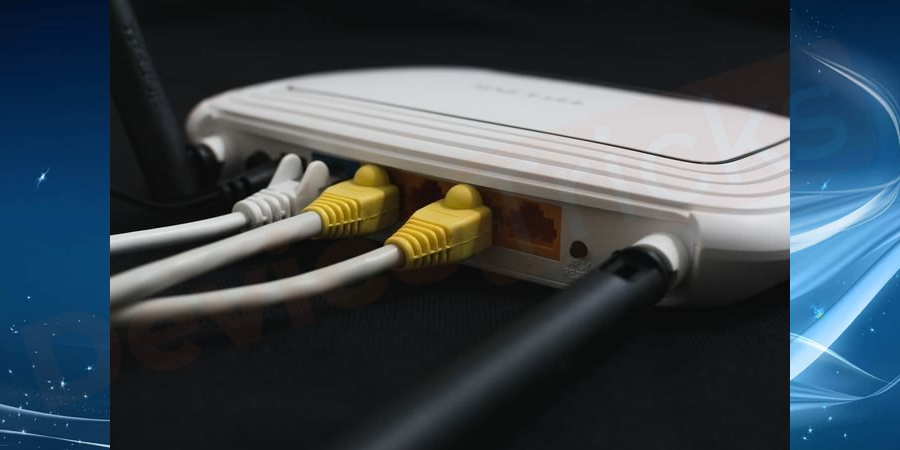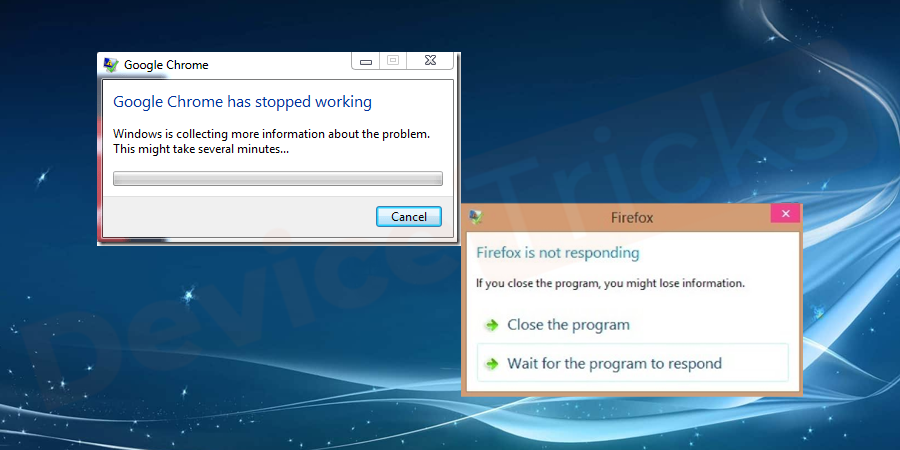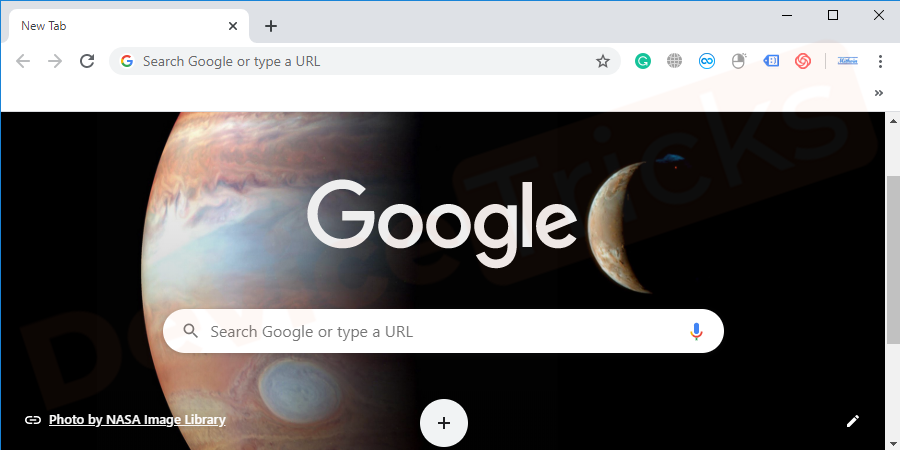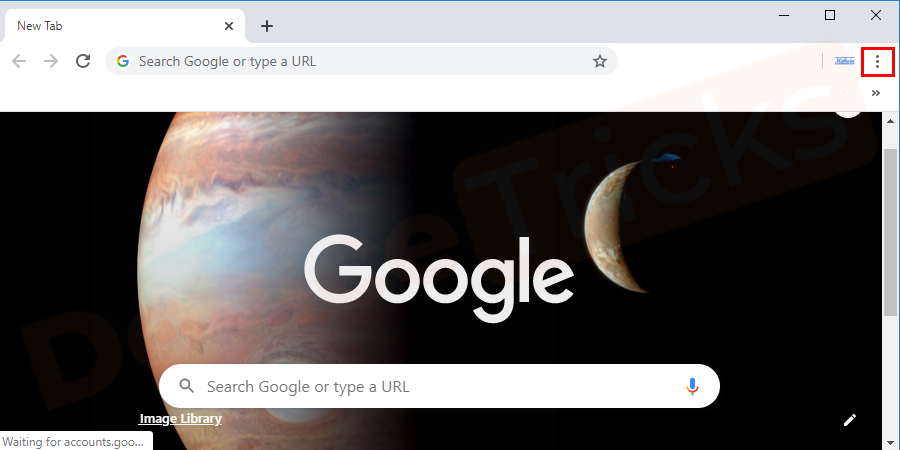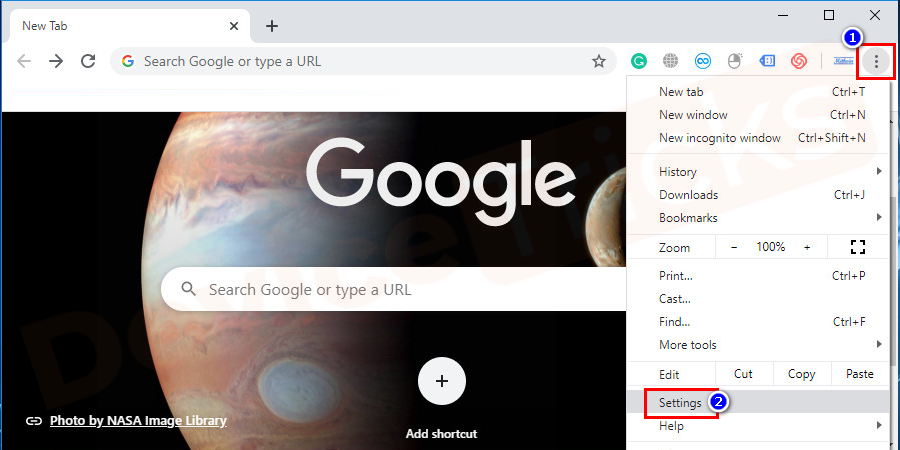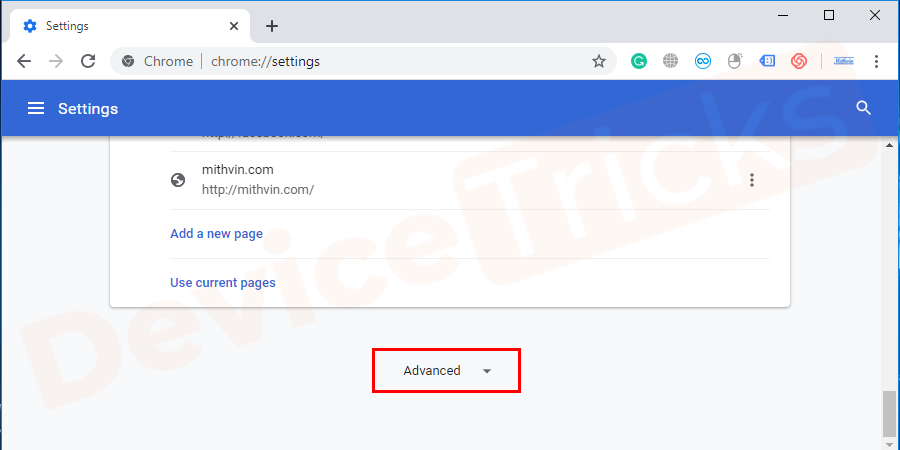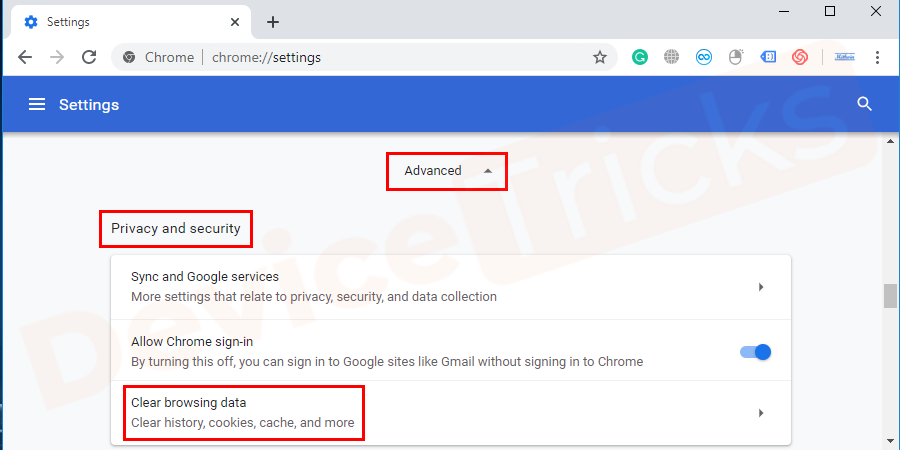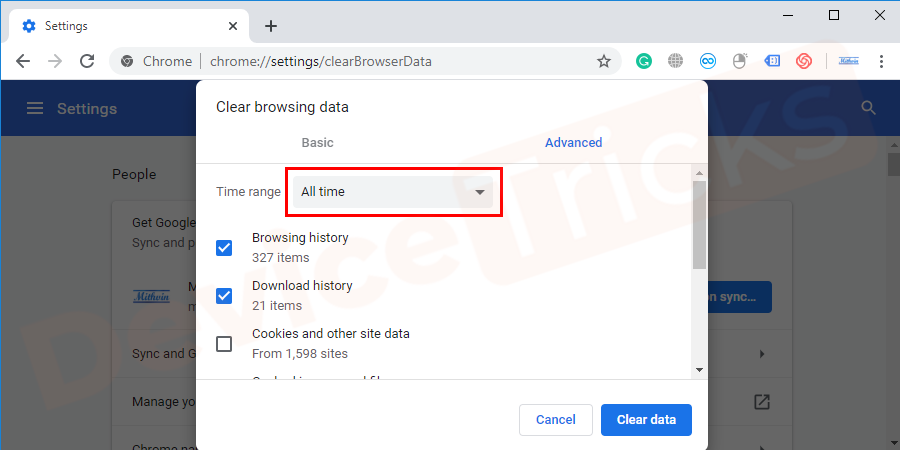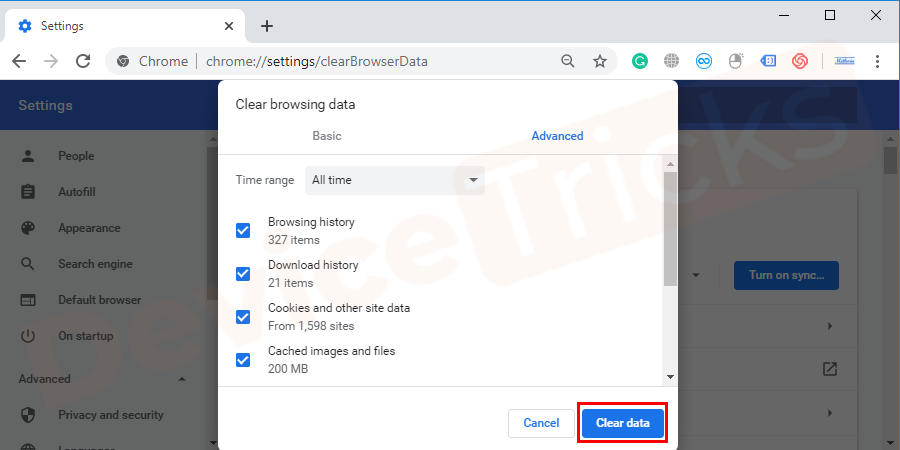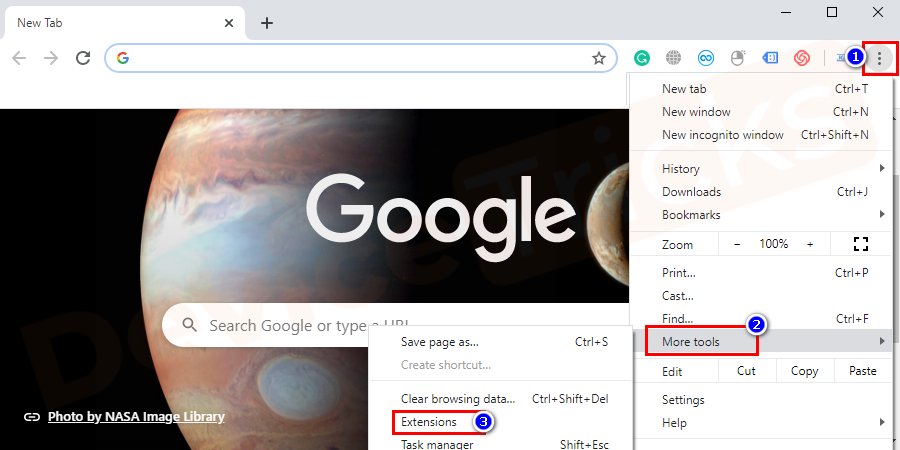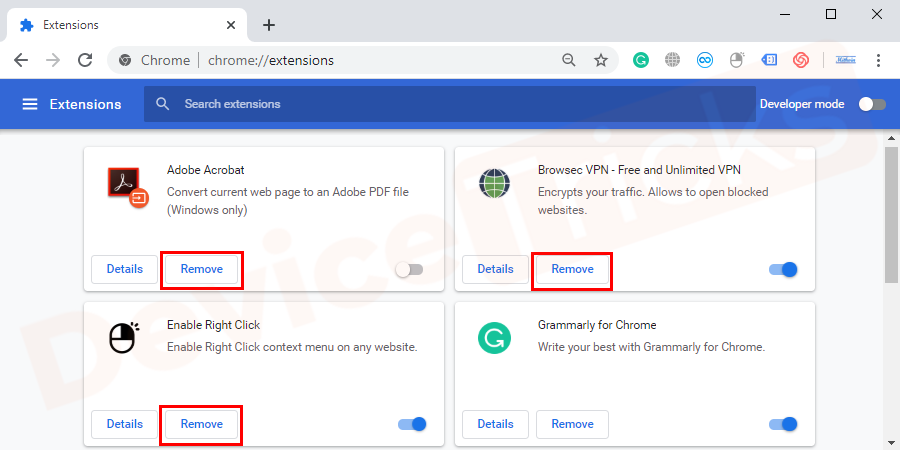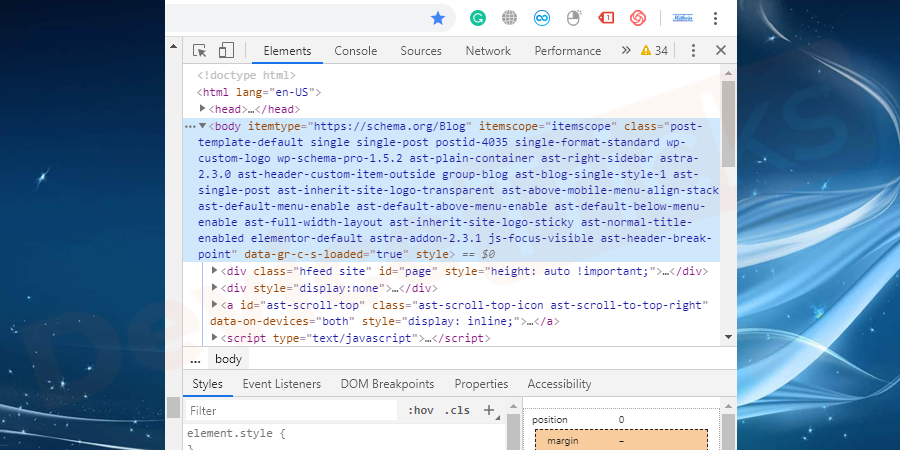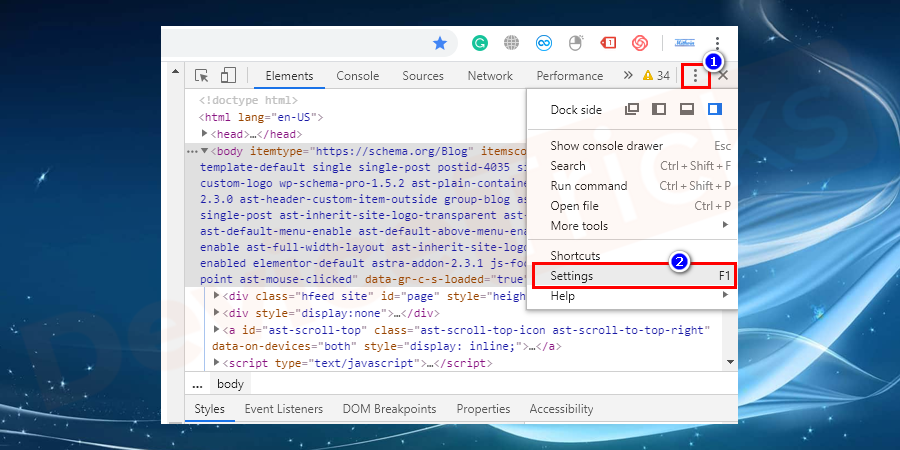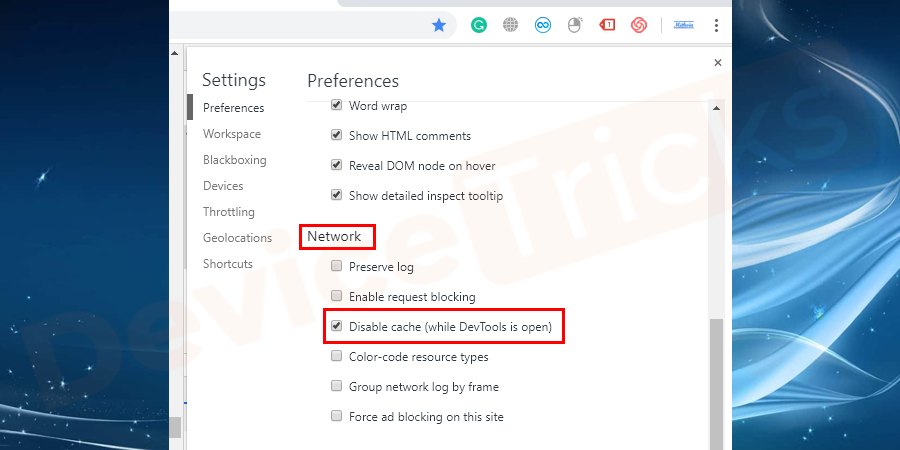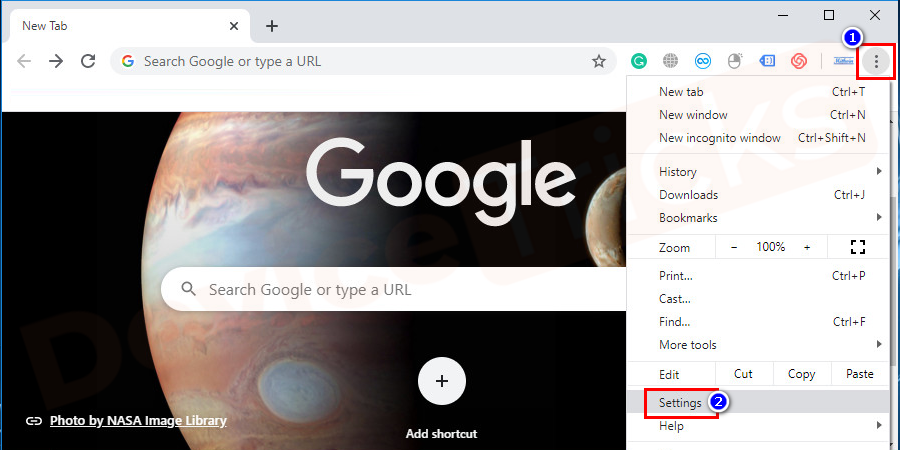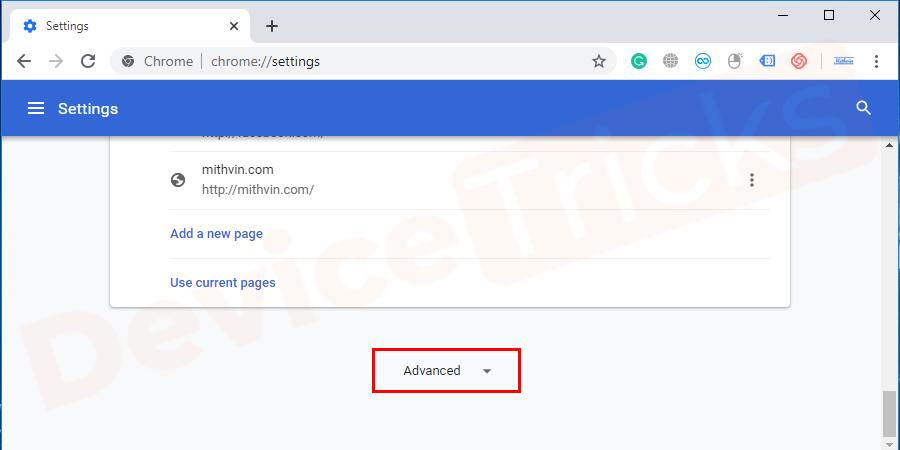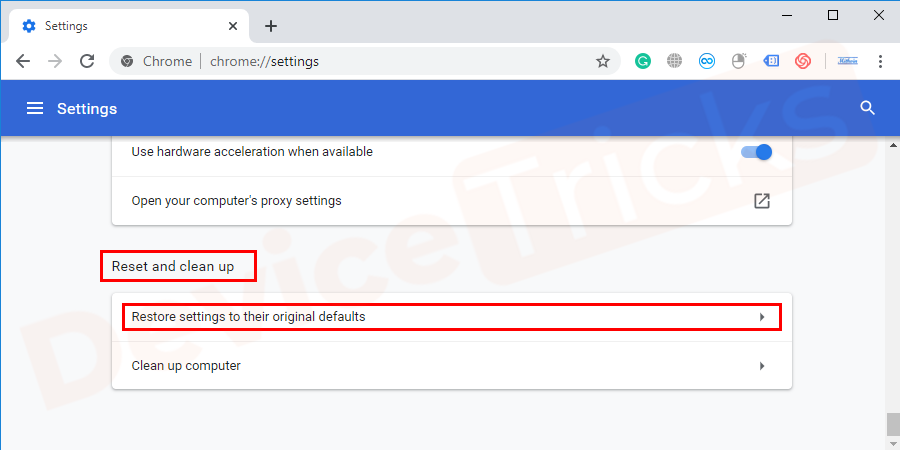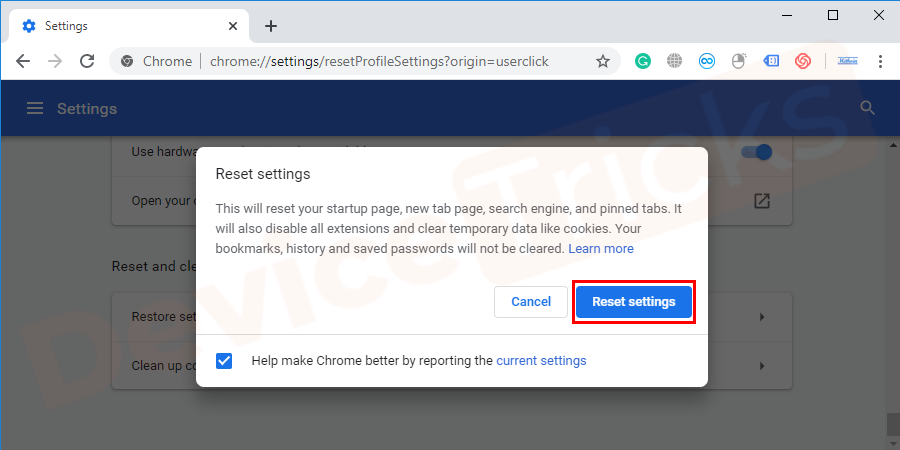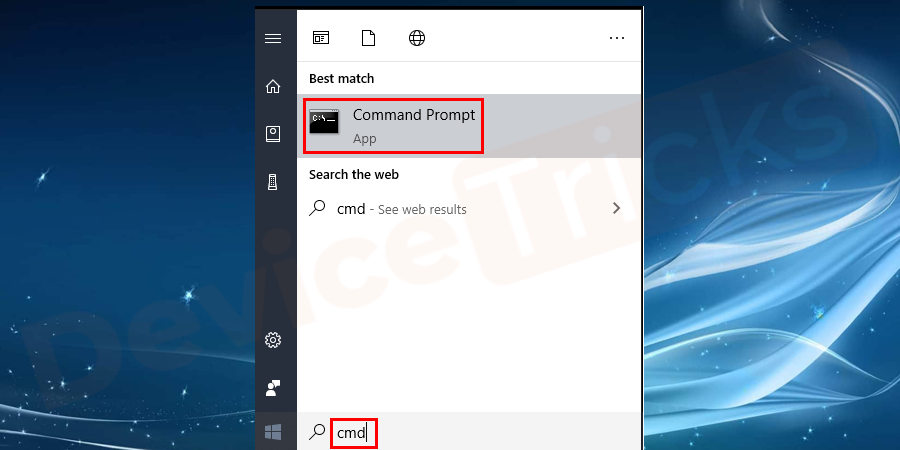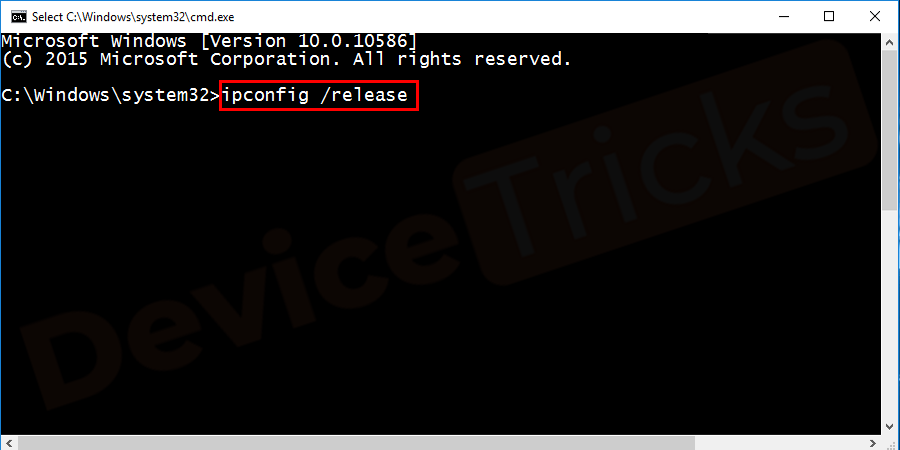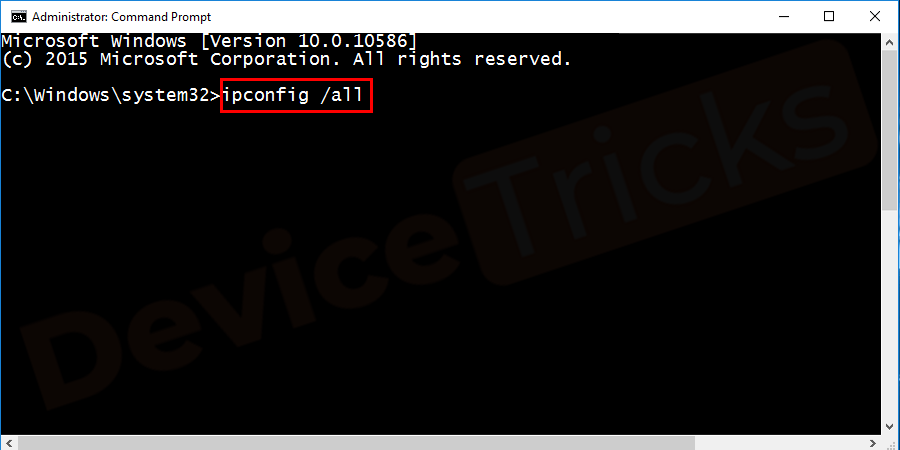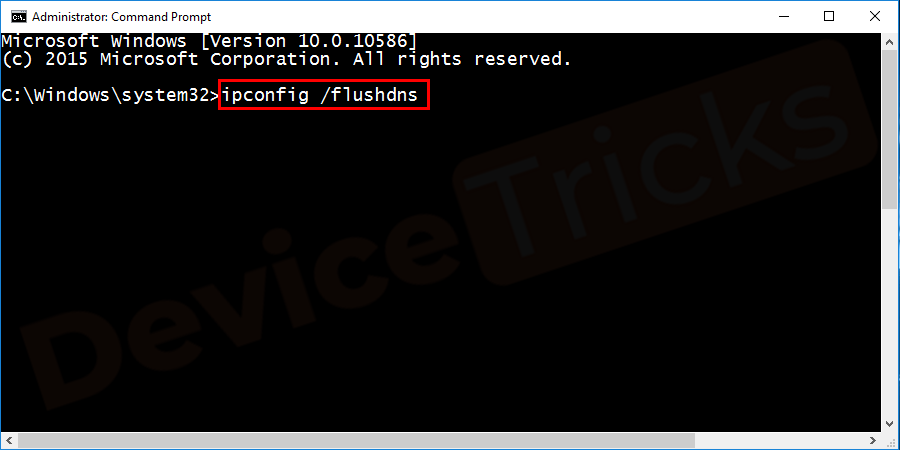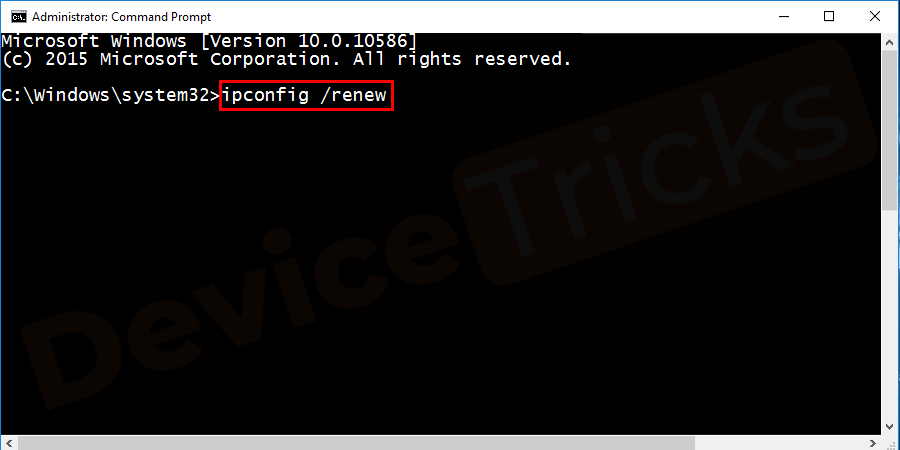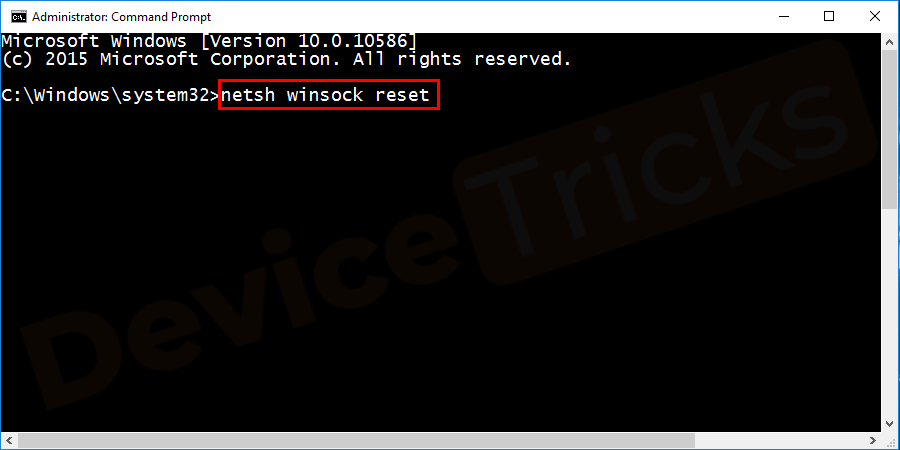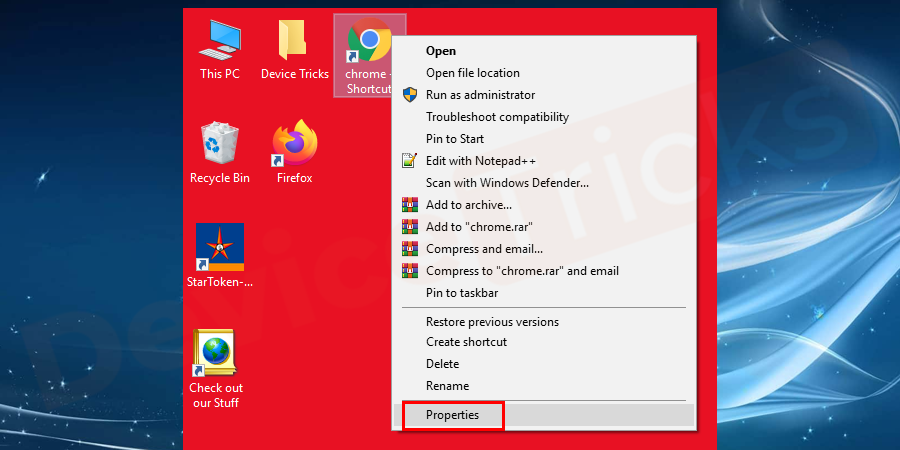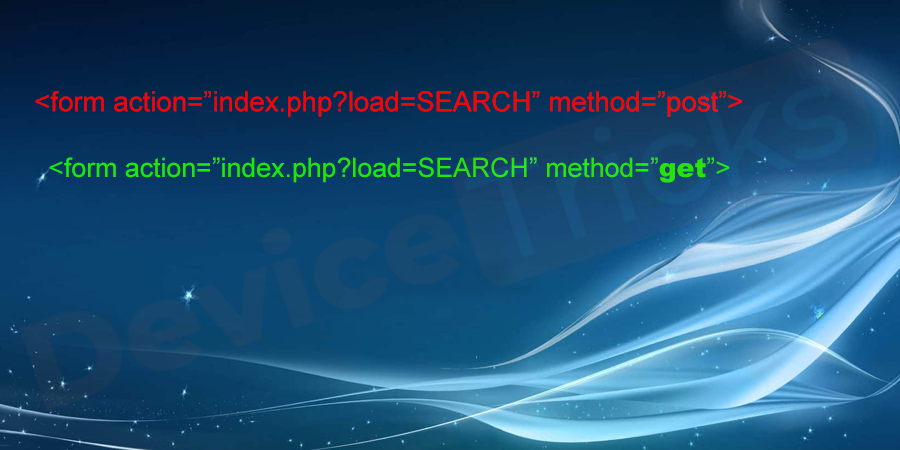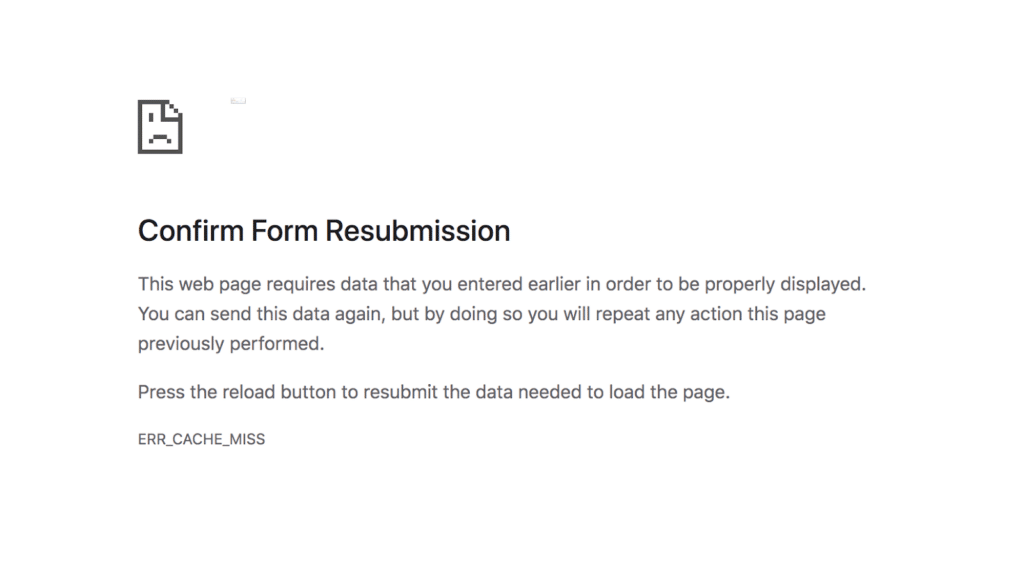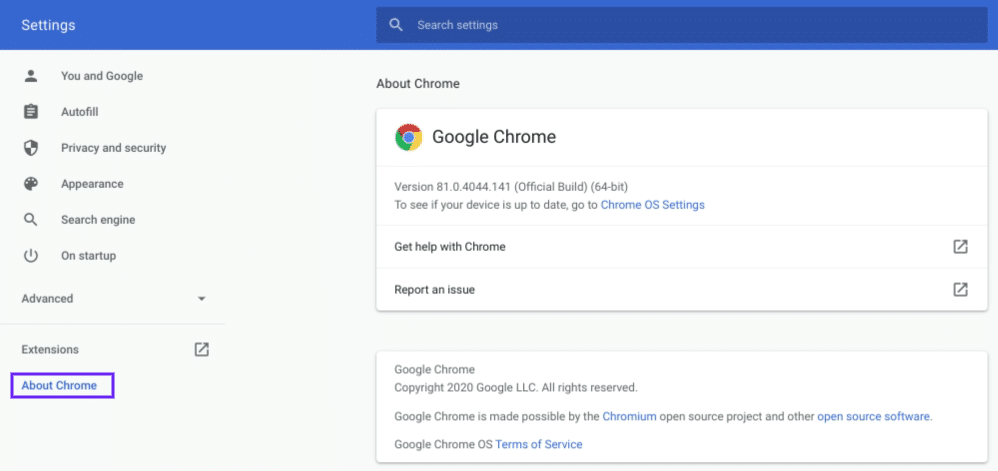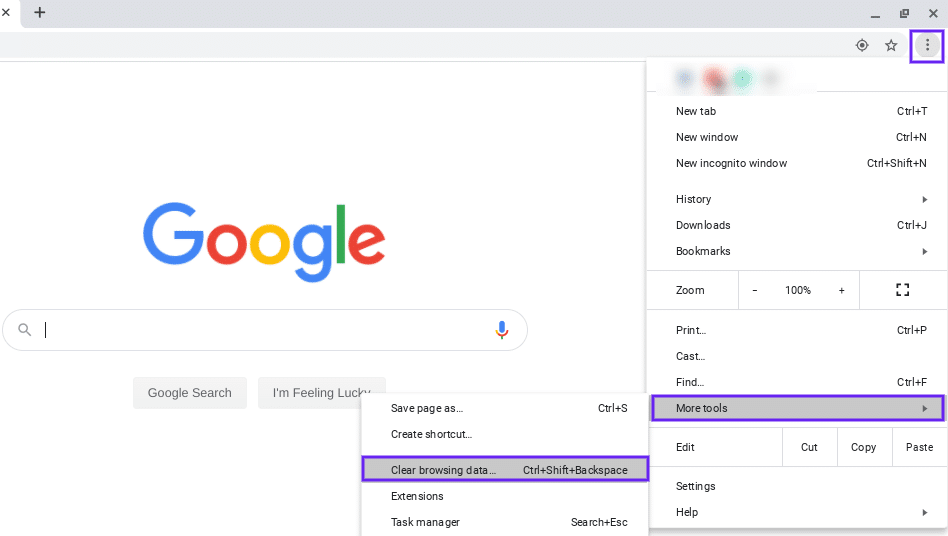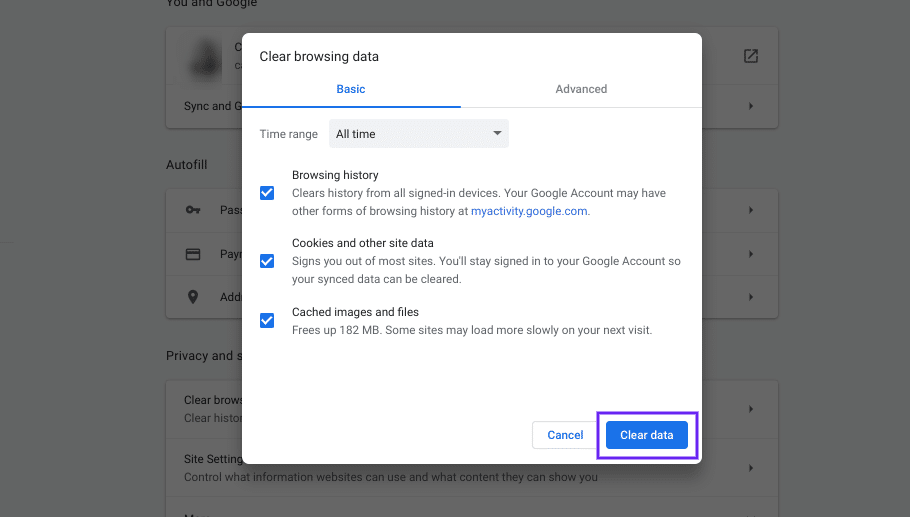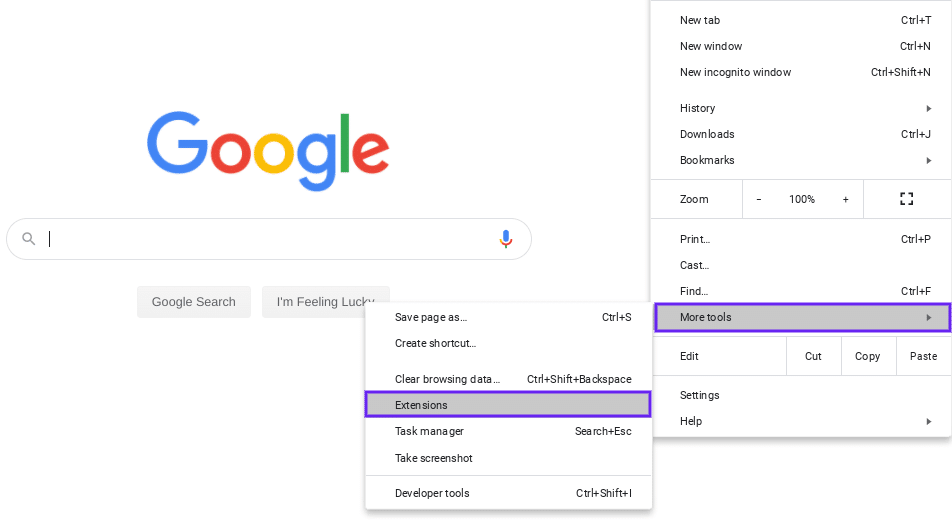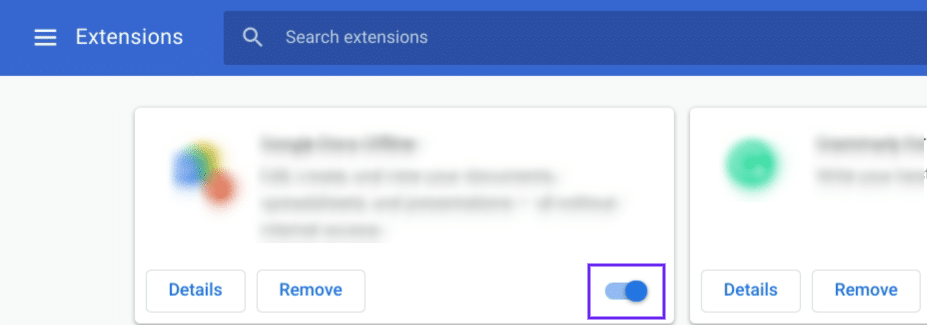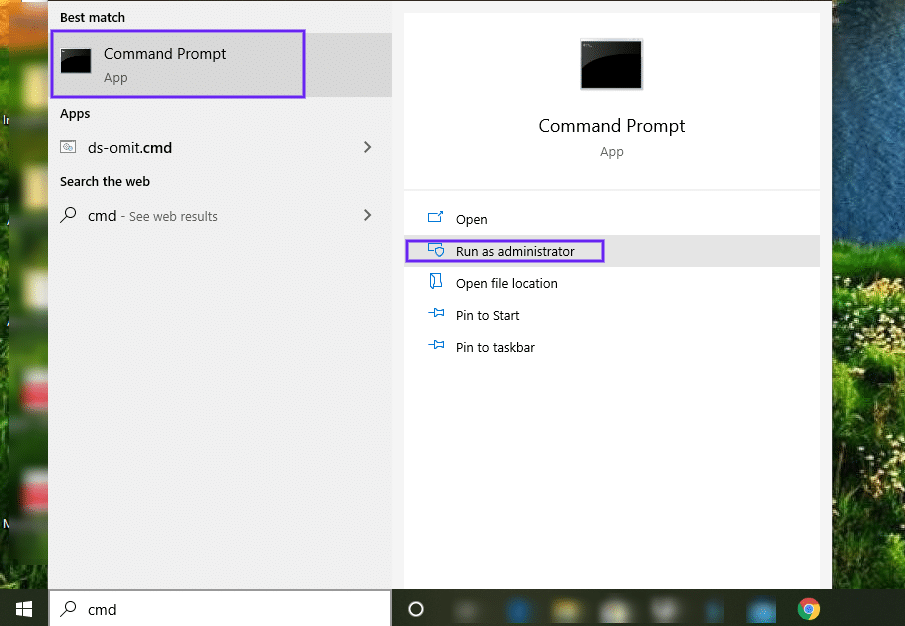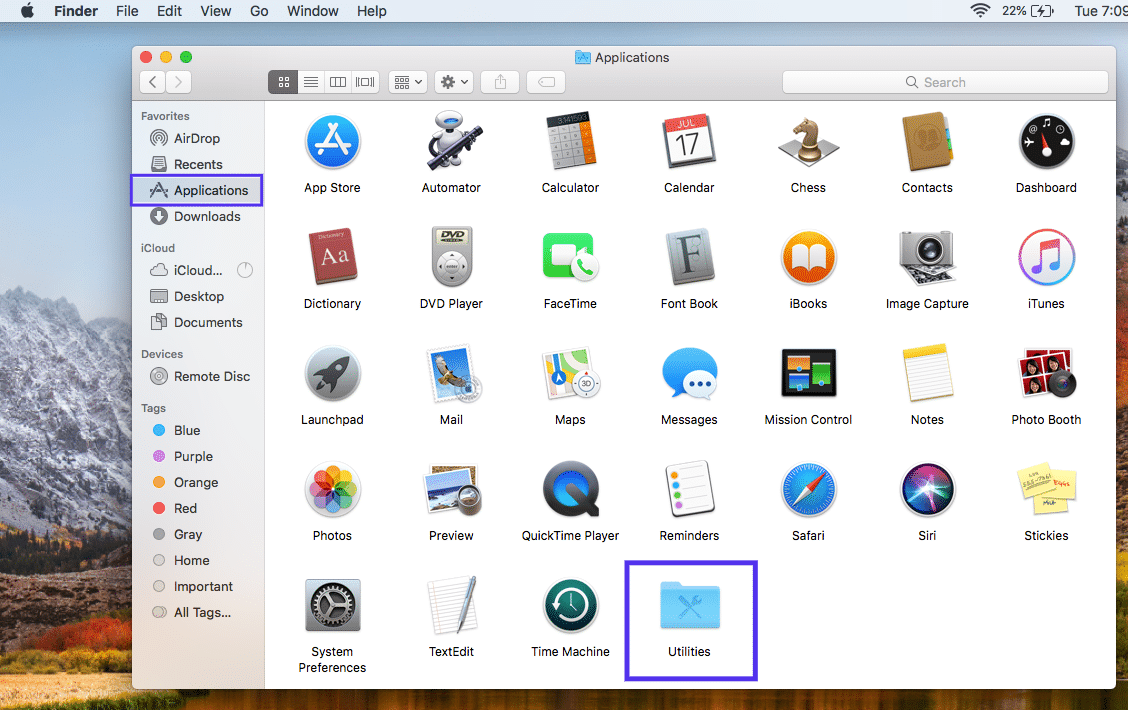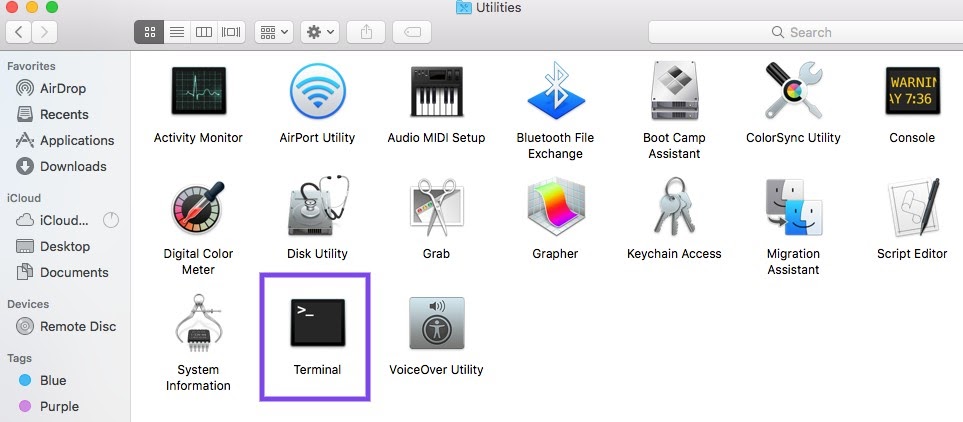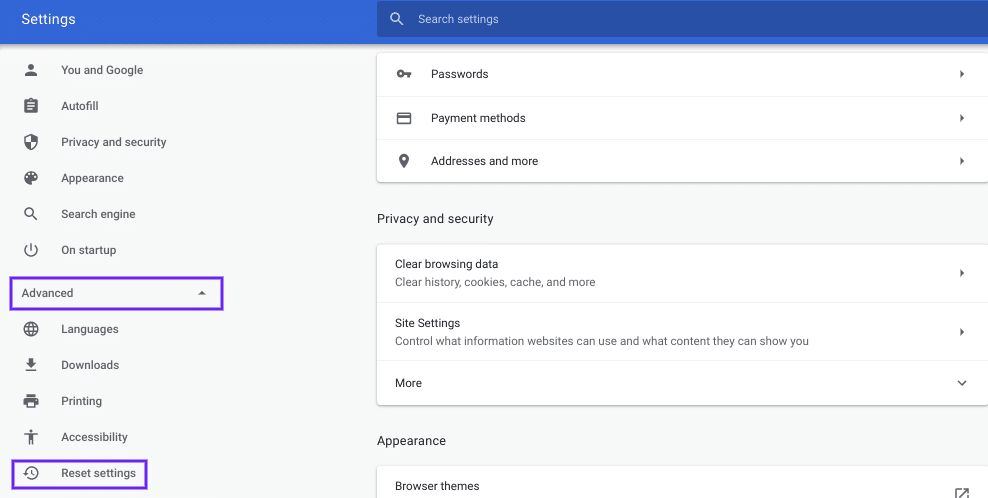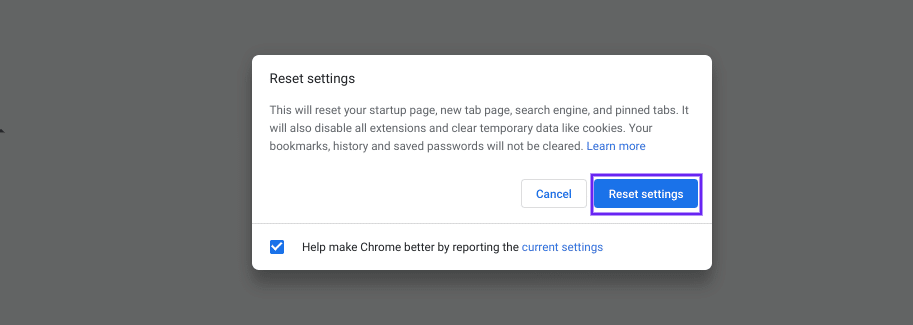**Some background: Credit goes to bruce (sqlwork.com) for his excellent explanation.
This web page requires data that you entered earlier in order to be properly displayed. You can send this data again, but by doing so you will repeat any action this page previously performed. Press Reload to resend that data and display this page.
Because of the sloppy coding practices of web developers browsers were forced to add this message. the scenario is as follows:
1) user fills in form and submits (posts form)
2) the server process the post data and responds with a new page (confirm) marked as not cacheable
3) the user navigates to a new page.
4) the user press back:
for the the browser to display the page in step 2, because its marked no-cache, it must request it from the server, in other words do the repost of the data (do step 1). here is were the sloppy coding came in, if this was an credit card charge, and repost detection was not on the server, the card is charged twice. this was (is) so common a problem, that the browsers had to detect this and warn the users.
the best fix is in step two, the server sends a redirect to the confirm page. then when the user accesses the confirm via history or back, its a get request, not a post request and will not show the warning.
note: webform’s postback model lends itself to this problem. also avoid server transfers.
My solution
$_SESSION[‘home’] used to store any errors on home page.
$_SESSION[‘tempEmail’] used to echo value on php form.
Note: Use one unique session variable for each page that has a HTML form for error handling and also any session variable for each value that is echoed on HTML form.
<?php
session_start();
//Initialize variables not initialized without overwriting previously set variables.
if(!isset($_SESSION['home'])) {
$_SESSION['home']="";
$_SESSION['tempEmail']="";
}
Optional — If logged in, assign email address to the $_SESSION[‘tempEmail’] variable (if not previously done) to pre-fill HTML form.
if(isset($_POST['Submit'])){
---your code---
//Error message(s) examples
$_SESSION['home'] = "Email and Password do not match, please try again.";
header("Location: " . $_SERVER['REQUEST_URI']);
$_SESSION['home'] = "Email address format is invalid. Please recheck.";
header("Location: " . $_SERVER['REQUEST_URI']);
//success
unset ($_SESSION['home']); //optional, unset to clear form values.
header ("location: nextpage.php");
---or---
header("Location: " . $_SERVER['REQUEST_URI']); //re-post to same page with the $_SESSION['home'] success message.
}
?>
<body>
Error box
<span><strong class="error"><?php echo $_SESSION['home'] ?></strong></span>
HTML form
<form action="#" name="loginform" method="post" >
<input type="text" name="userEmail" maxlength="50" title="Enter Your email" autocomplete="off" value="<?php echo htmlspecialchars($_SESSION['tempEmail']); ?>" placeholder="enter email" required/>
<input type="submit" name="Submit" value="Submit">
</form>
</body>
Not recommended to use on payment page,see discussion above. Tested in Firefox, Chrome, Safari, and IE9. The annoying messages are gone when using back button. Ensure that output buffering is turned «on» in your php script or php.ini to avoid header warnings. You can check your php.ini file for the following;
output_buffering=On
На чтение 6 мин. Просмотров 131 Опубликовано 18.04.2021
Пользователи могут столкнуться с ошибкой ERR_CACHE_MISS, сообщающей о повторной отправке формы. Обычно это означает, что просматриваемая веб-страница требует предоставления данных для продолжения. Иногда, когда вы уже ввели данные, их нужно ввести заново или будут использованы старые. Если эта ошибка повторяется, это означает, что проблема в вашем текущем браузере. Некоторые элементы в кеше могут быть непригодными для использования или некоторые конфигурации могут быть настроены неправильно.
Мы можем выполнить некоторые проверки вашего браузера, чтобы убедиться, что эта ошибка исходит от вас. Если к концу устранения неполадок вы определили, что проблема не в вашем браузере, это означает, что эта ошибка возникла на стороне сервера веб-сайта, и вы ничего не можете сделать, пока разработчики не исправят ее там.
Содержание
- Очистить данные браузера
- Проверить расширения браузера
- Сбросьте настройки браузера
- Отключить повторную публикацию запросов
- Удалите строку кэша из заголовка PHP
- Обновите ваш браузер
- Отключить систему кеширования
- Сбросить настройки сети
- Протестируйте с другими браузерами
Очистить данные браузера
Мы можем попробовать очистить ваш данные браузера. Ваш браузер может содержать неисправные файлы, которые могут быть причиной проблемы. Когда мы очищаем данные браузера, все сбрасывается, и браузер ведет себя так, как будто вы впервые посещаете веб-сайт.
Мы перечислили метод очистки данных просмотра в Google Chrome. В других браузерах методы очистки данных могут немного отличаться.
- Введите « chrome://settings » в адресную строку Google Chrome. и нажмите Enter. Откроются настройки браузера.
- Перейти вниз страницы и нажмите « Advanced ».
- После раскрытия расширенного меню в разделе « Конфиденциальность и безопасность » нажмите « Очистить данные просмотра ». .
- Появится другое меню, подтверждающее, какие элементы вы хотите очистить вместе с датой. Выберите « начало времен », проверьте все параметры и нажмите « Очистить данные просмотра ».
- Теперь перезапустите браузер после завершения работы всех приложений, использующих диспетчер задач, и проверьте, доступен ли сайт снова.
Проверить расширения браузера
Если очистка данных просмотра не работает для вас, мы можем проверить, доступны ли расширения браузера. создавая проблему. Вы всегда должны отключать те расширения, которые, по вашему мнению, могут вызывать проблему. Мы по-прежнему рекомендуем вам отключить все расширения в браузере, прежде чем переходить к следующему совету, чтобы определить, кроется ли проблема в вашем браузере или на сервере.
Чтобы проверить расширения вашего браузера в Chrome, введите « chrome://extensions »в адресной строке и нажмите Enter.. Вы можете отключить любое расширение, сняв флажок «включить» . Это автоматически отключит это расширение от внесения каких-либо изменений в ваш пользовательский интерфейс. Перезагрузите браузер и проверьте.
Сбросьте настройки браузера
Если вышеуказанные методы не дали никаких результатов, мы можем попробовать сбросить настройки вашего браузера. Обратите внимание, что все ваши сохраненные конфигурации будут стерты, и браузер будет таким, как вы только что установили. Сделайте резервную копию закладок в свой профиль Google на всякий случай. Убедившись, что у вас есть резервные копии всех данных, продолжайте.
- Введите « chrome://settings » в адресной строке Google Chrome и нажмите Enter. Это откроет настройки браузера.
- Перейдите в нижнюю часть страницы и нажмите « Advanced ».
- Перейдите к внизу страницы и нажмите « Reset ». Появится новое окно с просьбой подтвердить свои действия. Нажмите « Reset » и подождите, пока ваш браузер перезагрузится.
- После сброса завершите все задачи Chrome с помощью диспетчера задач и попробуйте снова открыть веб-страницу.
Отключить повторную публикацию запросов
Если вы столкнулись с этой проблемой в Google Chrome, вы всегда можете указать Chrome воздержаться от удаления кэшированных данных с сайтов. Для этого:
- Щелкните правой кнопкой мыши ярлык Chrome на рабочем столе и выберите параметр « Свойства ».
- Выберите вкладку « Ярлык » сверху.
- Щелкните поле « Target ».
- В конце текста, написанного в поле, введите следующую команду с пробелом.
- disable-prompt-on-repost
- Нажмите « Применить », а затем « OK », чтобы сохраните изменения.
- Проверьте , сохраняется ли проблема.
Удалите строку кэша из заголовка PHP
В «Заголовке» есть специальная строка, если вы открыли форму в PHP-коде, эта строка сообщает браузеру не кэшировать данные с сайта. Поэтому на этом этапе мы удалим эту строку. Для этого:
- Заголовок в коде PHP обычно выглядит следующим образом.
header ('Cache-Control: no -store, no-cache, must-revalidate, max-age = 0 '); - Мы должны удалить « no-store , »Так, чтобы она выглядела как следующая строка.
header ('Cache-Control: no-cache, must-revalidate, max-age = 0'); - Сохраните изменения после редактирования и проверьте, сохраняется ли проблема..
Обновите ваш браузер
Прежде чем мы перейдем к отключению системы кеширования и сбросу вашей сети, попробуйте обновление вашего браузера до последней сборки. Проблема, с которой вы столкнулись, может быть исправлена в недавнем обновлении. Если обновление браузера не работает, перейдите к другим упомянутым методам устранения неполадок.
- Нажмите на три точки в правом верхнем углу экрана. Когда появится раскрывающийся список, нажмите « Справка » и выберите « О Google Chrome ».
- Chrome автоматически выполнит поиск доступного обновления. Если доступно обновление, оно будет загружено соответствующим образом. После загрузки вам будет предложено перезапустить браузер. Убедитесь, что вы сохранили все необходимое. Нажмите кнопку « Перезапустить ».
- После перезапуска проверьте, решена ли проблема.
Отключить систему кеширования
Мы можно попробовать полностью отключить систему кеширования и проверить, удаляет ли это сообщение об ошибке. Обратите внимание, что система кеширования будет отключена, пока открыт только режим разработчика. После закрытия система кеширования снова будет работать.
- Нажмите клавиши Ctrl + Shift + I , чтобы открыть режим разработчика. Затем нажмите F1 , чтобы сразу перейти к настройкам.
- Прокрутите настройки вниз, пока не появится опция « Сеть ». Установите флажок « Отключить кеш (пока DevTools открыт) ».
- После отключения кеша обновите страницу, не закрывая DevTools, и проверьте, успешно ли открывается веб-страница.
Сбросить настройки сети
Мы также можем попробовать сбросить настройки сети. Возможно, вы столкнулись с этой проблемой из-за неправильных сетевых настроек, сохраненных на вашем компьютере. Обратите внимание, что для выполнения этих действий вам потребуется учетная запись администратора.
- Нажмите Windows + S , чтобы открыть панель поиска. Введите « cmd » в диалоговом окне, щелкните приложение правой кнопкой мыши и выберите « Запуск от имени администратора ».
- В командной строке с повышенными привилегиями выполните одну за другой следующие команды.
ipconfig/release
ipconfig/all
ipconfig/flushdns
ipconfig/refresh
netsh int ip set dns
netsh winsock reset
- После выполнения всех команд перезагрузите компьютер и проверьте, решает ли это проблему.
Протестируйте с другими браузерами
Мы можем попробовать открыть веб-страницу в другом браузере. Если веб-страница не открывается и в другом браузере, это означает, что проблема не в вас, а в самом веб-сайте. Это будет исправлено разработчиками только на стороне сервера.
Примечание. Убедитесь, что сторонние брандмауэры или программное обеспечение для интернет-мониторинга неактивны. . Если это так, отключите его и попробуйте снова получить доступ к веб-странице. Также попробуйте перезагрузить маршрутизатор, отключив питание как минимум на 30 секунд.
Err_Cache_Miss or Confirm form resubmission error! Sounds like your problem? Folks you are not only one to encounter this kind of error. There are many more like you facing the same problem and wondering how to resolve it?
Don’t panic. You have landed on the right platform. Device Tricks is the right place where you can access free tutorials to fix “Err_Cache_Miss” or “Confirm form resubmission” error. But before that let’s have a close insight into the problem.
An outlook to Err_cache_miss or Confirm Form Resubmission Error
As we all know Google Chrome is one of the featured web browsers used by many of us. To maintain this popularity among its users they have been rolling out various featured updates from time to time. There is no doubt this, such updates push the browser towards complexity and make it more prone to various types of errors. That’s why today you are here!
Almost every one of us may come across err_cache_miss error with Confirm form resubmission message. This “Err_Cache_Miss” error usually occurs while browsing in Google Chrome has really something to do with cache. It occurs accompanying a dialogue box pop up when your browser is having trouble caching a site, or a web application’s cache. Many users complain that they encounter the pop up stating the following message:
Confirm Form Resubmission
The webpage requires data that you entered earlier in order to be properly displayed. You can send the data again, but by doing so you will repeat any action this page previously performed. ERR__CACHE_MISS
While some of the users have encountered this also
The site can’t be loaded from the cache
The saved (cached) copy of this site was unreachable.
ERR_CACHE_MISS
OR
Confirm Form Resubmission
The page you’re looking for used information that you entered. returning to that page might cause any action you took to be repeated. Do you want to continue?
Continue Cancel
No matter what pop-up you have encountered out of these. All these pop-up dialogues and messages occur when pressing the back or refresh button (try to go back to the previous page). All these relating to Err_Cache_Miss or Confirm Form Resubmission. Though the Superuser posters considered this as a sort of feature in spite of calling it an error. Still, after so many threads by the users in various forums, this is persistent.
Now the area of concern is “Err_Cache_Miss” is generated by many factors that add up one by one and make the browsing complicated. However, the positive thing is you can get rid of the cache error. As with any browser issue, there are so many ways to fix this one also. Before that, you might be interested in knowing why this message appears in Google Chrome.
Why Confirm Form Resubmission appears in Google Chrome?
As we have discussed earlier that the Superuser posters deal with this pop-up as a feature by Google Chrome which acts as a warning. The Google Chrome developer has built it to prevent browsers to avoid duplicacy in post actions on forms accidentally.
Moreover, you will face this message only on those sites which contain any type of form such as:
- Credit card forms for performing transactions
- Sign up and login forms
- Contact forms such as our contact pages on websites
- Search forms for searching any database
- Anything that has to deal with any type of add, edit or delete entries on a database
Just for example, if you visit any site to buy something. After adding the product in your cart you need to proceed towards check out followed by the payment. In today’s era most of us use credit cards for such payments. After filling the required information of the card you need to click on submit to finish the process.
Now at this stage, if you refresh that page either knowingly or accidentally the browser will require the whole data that you entered earlier to send again. This way there are chances that you will be charged twice if you weren’t asked to “confirm form resubmission”.
Anyway, it is only one example that all of us might have observed. The basic purpose behind this PHP code is to save us from repeating the same task.
Being one feature by Google Chrome most of the users don’t like this message to encounter and they often search about methods to turn off Confirm Form Resubmission on Chrome.
Also Read: Err_Connection_Reset in Google Chrome.
The root cause behind this Confirm Form Resubmission error is the weakly built module of Google Chrome which is responsible for the forward and backward movement of any web page.
Apart from this, there are some other reasons also behind this error. For beginners, it could be due to incorrect coding on their site or application. Besides, it could be a bug also or something like a corrupt extension in Google Chrome. The following are the causes of the confirm form resubmission.
- A poor internet connection.
- If the browser is unable to obtain the cache files from the webpage, you will get this error.
- In case, the website settings are improper you will surely get the confirm form resubmission issue.
- Any page that contain a certain kind of information has refreshed.
- If you press the back button or refresh the browser amid of the form being submitted.
- It is also due to some of the bugs that are present in your web browser. The corrupted extension or some other reasons in your browser causes the error.
- The website arises to confirm form resubmission due to security reasons.
Now you have come to know the reasons behind this so-called error. You can solve the confirm form resubmission by these solutions:
How to fix PHP error Confirm Form Resubmission (Err_cache_miss) in Google Chrome?
The confirm form resubmission is not only occurring in Google Chrome but also occurs in various websites with different names. The name err_cache_miss confirm form resubmission message is exclusively seen in the Google Chrome browser.
Check if the Internet is working properly 
In most of the cases, the issue Err_Cache_Miss occurs due to poor or unavailability of internet connection. To check for this just open any other site. If another site is opening properly then there is nothing wrong with your internet and the problem lies somewhere else.
Ensure the browser is working properly
Once you have checked for the working of the Internet then it comes to the browser part. Try opening the same site in other browsers. If the site opens properly in the other browser then it means that the problem is with your browser only. In that case, just uninstall the browser and reinstall it and change the browser settings to default.
By doing this you will be assured that both the internet and the browser are working properly and you need to move ahead towards the other solutions.
Reload Page to fix PHP error Confirm Form Resubmission (Err_cache_miss) in Google Chrome
The first and foremost thing you should try to fix the err_cache_miss reload the page. You should click on the reload button as shown in the screen or click on the F5 button to refresh the page.
Remove Browsing Data and Cache to fix PHP error Confirm Form Resubmission in Google Chrome
Most of the times, confirm form resubmission occurs due to cache in your Google Chrome browser. You can clear the browser data and cache on following the below procedure.
- Open your browser.
- Click on the Menu option present at the top right corner of the window.
- From the drop-down list, you need to choose settings options.
- On the new window, scroll down till the bottom and click on the advanced button.
- Now, navigate to the clear browsing data option present under the section of privacy & security. Click on it.
- On the pop-up window, under the advanced section, choose all time from the time rage.
- Scroll down to look after all the options and up-tick them all. And then click on the clear data option to delete them.
- After the restart of your system, open the browser and access the website. Hope it goes well without causing an error err_cache_miss.
Note: You should note that on deleting cache, browsing the history, and all will delete all the data of password, auto-fill, history, cache, and everything. The browser looks at the newly installed one.
Disable Conflicting Browser Extension
The installed browser extensions and toolbars conflicts also cause confirm form resubmission error. Here, the one or more extensions block the normal working of the browser and throw the err_cache_miss error. You need to find the culprits and disable or delete permanently according to your requirements.
- You have to open your browser. Click on the Menu option present at the top-right corner of the browser window. You will get drop-down options, navigate to more tools. On the next set of options, choose Extensions.
- Delete the extensions which are not useful to you. Check the rest of the extensions which are suspicious and click on the Disable button to check if everything works fine.
- You need to do this for every suspicious extension and restart the browser to check whether the issue is resolved or not.
- The confirm form resubmission due to the browser extension conflict surely resolve on following the above steps.
Use Developer Tools to Fix PHP error Confirm Form Resubmission (Err_cache_miss) in Google Chrome
You have to open developer tools to disable cache. The corrupt cache file may cause the error to avoid it you need to disable cache option on below steps.
- You need to click simultaneously shift + Ctrl + I from the keyboard. You can also open developer tools on going through the menu section on the screen > click on more tools > from the list, you can choose developer tools option.
- Now, click on the menu option on the developer tools screen. And next, choose settings.
- Here, scroll down to find disable cache option and up-tick it.
- It helps you to disable the cache and to fix the issue related to the cache.
Reset Browser Settings
The change in the browser settings also causes the err_cache_miss error. You need to reset the settings to get them into the default settings.
- Open browser. Click on the menu option. You need to choose settings from the drop-down choices.
- On the new window, you need to choose the advanced option present on the bottom of the window.
- You have to choose the reset option reset at the bottom of the window.
- Now, you have to confirm on the pop-up window.
- Finally, your browser settings are reset to default. You need to restart your browser and try to access the website that is causing the error. Hope that the website is accessible without causing confirm form resubmission error.
Reset Network Settings
The network settings may result in the cache error. You have to reset network settings to fix the confirm form resubmission error.
- Go to the start button. Search for CMD and click on it.
- The CMD new window opens.
- You have to type the following commands one by one to reset the network.
You have to click on the enter button after each command to execute it. If you face any issue on executing any of the following commands, you can let us know in the comment section to get a solution to it.
ipconfig /release
ipconfig /all
ipconfig /flushDNS
ipconfig /renew
netsh winsock reset
- All the commands executions are done; your network settings reset is successful.
- You need to close all the windows and restart your system. Now, try to access the website, hope the issue is not present.
Disable Confirm Form Resubmission Prompt on Google Chrome (ERR_CACHE_MISS)
Here I will show you the best solutions to disable this pop-up. Still, it is always recommended that you don’t need to apply these solutions, as this message works as an alert feature, especially where the financial implication is involved.
#1. Avoid using Back Button or Update Chrome
As this pop-up is a feature alert, It is always recommended not to disable this. You should avoid using the back button or refresh the page while submitting any form. After successful submission of the form just close that tab and use any other link.
Most of the time the Confirm Form resubmission issue resolves itself while updating Google Chrome. So it is always better to check for the latest updates.
#2. Disable Confirm Form Resubmission from Chrome
Disable the Confirm Form Resubmission feature from Chrome, if you’re Windows user;
- Right-click on the Chrome shortcut and select properties
- In the target field, add -disable-prompt-on-repost just after chrome.exe
For example, if the target is
“C:Program Files (x86)GoogleChromeApplicationchrome.exe”C: program files ( x 86) Google Chrome ApplicationChrome.exe
Simply change the above target URL with
“C: program files (x86) Google Chrome applicationChrome.exe”-disable-prompt-on repost
- Exit the browser and re-open it using the same shortcut.
- Now check for the pop-up.
Note: Now you have two shortcuts for the Chrome browser. One will be having the default properties while the other will have configured with the above-mentioned method. It totally depends on you to use the particular shortcut depending upon the type of usage required. For the security point of view, it is recommended to use the shortcut with the default properties to use while performing the task pertaining to any financial implications.
#3 Disable Confirm Form Resubmission from Chrome using Get in place of POST
The previous method is replacing the POST method. Here you have to use GET in place of POST.GET and POST is both HTTP methods. HTTP is a link between the client and server that lets the client get data from the server. To resolve the Confirm Form Resubmission you have to replace the POST method by GET method. Follow these steps to replace
- Just remove the post from the URL and paste GET in place
For example if the URL is
<form action=”index.php?load=SEARCH” method=”post”>
It will look like this after replacing the post
<form action=”index.php?load=SEARCH” method=”get”>
Conclusion
All the fixes given above are the top fixes to the error err_cache_miss confirm form resubmission message. You can try them and let us know which solution worked for you. Wanna get some more Device Tricks? Follow our Instagram, Facebook, and Twitter to never miss an update.
За последние 24 часа нас посетил 11591 программист и 1153 робота. Сейчас ищут 257 программистов …
Помогите! При обновлении страницы ERR_CACHE_MISS
Тема в разделе «PHP для новичков», создана пользователем yazva, 25 ноя 2015.
-
yazva
Новичок- С нами с:
- 25 ноя 2015
- Сообщения:
- 3
- Симпатии:
- 0
При обновлении страницы или для перехода назад выскакивает окно (Подтвердите повторную отправку формы) ошибка ERR_CACHE_MISS. Помогите или подскажите. Что делать?
#1
yazva,25 ноя 2015
-
Ganzal
СуперстарКоманда форума
Модератор- С нами с:
- 15 мар 2007
- Сообщения:
- 9.901
- Симпатии:
- 968
всё правильно. значит ресурс передавался в ответ на POST-запрос. обычно после отправки формы делают редирект с GET-запросом и тогда обновление или шаг назад уже не вызывают таких проблем.
#2
Ganzal,25 ноя 2015
-
yazva
Новичок- С нами с:
- 25 ноя 2015
- Сообщения:
- 3
- Симпатии:
- 0
а где и что прописать нужно, направте меня на правельный пут
#3
yazva,25 ноя 2015
-
Ganzal
СуперстарКоманда форума
Модератор- С нами с:
- 15 мар 2007
- Сообщения:
- 9.901
- Симпатии:
- 968
изучай функцию header
#4
Ganzal,25 ноя 2015
-
yazva
Новичок- С нами с:
- 25 ноя 2015
- Сообщения:
- 3
- Симпатии:
- 0
Я бы с радостью изучил, нужно очень срочно. За помощь будет благодарность….
#5
yazva,25 ноя 2015
-
Ganzal
СуперстарКоманда форума
Модератор- С нами с:
- 15 мар 2007
- Сообщения:
- 9.901
- Симпатии:
- 968
срочности не бывает у тех кто размещается в разделе для новичков. если срочно но не умеешь — примени заклинание «кошелек» в разделе «фриланс» и разменяй свои рубли незнания на наши минуты результата.
#6
Ganzal,26 ноя 2015
-
denis01
СуперстарКоманда форума
Модератор- С нами с:
- 9 дек 2014
- Сообщения:
- 12.236
- Симпатии:
- 1.716
- Адрес:
- Молдова, г.Кишинёв
Пример из документации http://php.ru/manual/function.header.html
Код (PHP):-
<?php
-
header(«Location: http://www.example.com/»); /* Перенаправление броузера */
-
/* Можно убедиться, что следующий за командой код не выполнится из-за
-
перенаправления.*/
-
exit;
это можно разместить после того как сделал всё что нужно с данными которые пришли и вместо показа страницы выполняешь код выше, ну ссылку только на свой сайт замени, поставь ту которая должна открываться
#7
denis01,26 ноя 2015
(Вы должны войти или зарегистрироваться, чтобы разместить сообщение.)
- Ваше имя или e-mail:
- У Вас уже есть учётная запись?
-
- Нет, зарегистрироваться сейчас.
- Да, мой пароль:
-
Забыли пароль?
-
Запомнить меня
Google Chrome is one of the most popular and reliable web browsers out there, but it isn’t without fault. There are a handful of common issues you might encounter while using it, including the ‘ERR_CACHE_MISS’ error message.
If you’ve come across this message, chances are the browser is also asking you to re-enter or submit some information. While this error can be confusing and frustrating, it’s also entirely fixable.
There are a handful of quick, easy methods you can use to resolve this error message, and successfully reach the site you’re trying to visit.
In this post, we’ll explain what ‘ERR_CACHE_MISS’ means and discuss some of its common causes. Then we’ll walk you through several methods you can use to fix it.
Let’s get started!
What Does ‘ERR_CACHE_MISS’ Mean?
There are a handful of popular error messages you might come across when using Chrome. These include issues like ERR_QUIC_PROTOCOL_ERROR and ERR_SSL_OBSOLETE_VERSION.
Another error that Chrome users frequently encounter is the ‘ERR_CACHE_MISS’ message:
From the name, it’s clear that this error is related to caching. More specifically, there are a variety of reasons you might be seeing this message, including:
- Your browser is unable to obtain cache files from the site you’re trying to access.
- There are bugs, corruptions, or inefficiencies in your browser, browser settings, or browser extensions.
- The website you’re trying to visit has incorrect coding or PHP issues.
If you’re a developer, you may encounter this message if you’re using the wrong codes to test an application or website, either on Android or another OS.
As a user, you could encounter it when trying to access just about any website, even highly-popular ones such as Facebook.
It’s worth noting that while this problem is almost entirely exclusive to Chrome, some users have reported running into similar issues in Firefox. More specifically, in versions of Firefox 32 and above, the message reads as “Document Expired”.
However, most messages include a “Confirm Form Resubmission” message or prompt. This usually occurs when a Chrome user is completing or submitting a form and uses the back/forward buttons too often or too quickly.
The ‘ERR_CACHE_MISS’ error: Confusing. Frustrating. But fixable! ✅ Read more here ⬇️Click to Tweet
How to Fix ‘ERR_CACHE_MISS’ in Google Chrome (7 Solutions)
Now that you understand a bit more about what ‘ERR_CACHE_MISS’ means, it’s time to learn how to resolve it. Let’s take a look at seven methods you can use to fix the ‘ERR_CACHE_MISS’ message in Google Chrome.
1. Reload the Page
Occasionally, the ‘ERR_CACHE_MISS’ error in Chrome may appear on your screen if you’re experiencing network connection issues. If this is the case, simply reloading the web page might be enough to resolve it.
You can reload the page by clicking on the reload icon in the top-left corner of the address bar in your Chrome browser:
Alternatively, you can also press the F5 key on your keyboard. If you still see the error message, it’s safe to assume that your network connectivity was not the source of the issue, and it’s time to move on to the next method.
2. Update Your Browser
If you’re using an old or outdated version of Chrome, it’s a smart idea to upgrade to the latest version. This can help to eliminate any incompatibility issues or inefficiencies that might be contributing to the ‘ERR_CACHE_MISS’ error message.
To update your browser, open a new window and then navigate to Settings > About Chrome:
On this page, you’ll see whether you’re using the latest version of the browser. If you’re not, there will be an option to Update Chrome.
Follow the prompts, then restart your browser and try to access the web page again.
3. Clear Your Browser Data
If your browser has accumulated corrupted files in your cache, it may result in the error message you’re seeing now. Therefore, the next step you should take in your attempt to resolve the problem is to clear your browser data.
To do this, go back to your Chrome settings menu. Hover over More tools, and then in the menu panel that opens, select Clear browsing data:
In the window that appears next, make sure all three options (Browsing history, Cookies and other site data, and Cached images and files) are selected. Hit the Clear data button:
Once you clear the data, refresh the browser.
Hopefully, you’ll no longer see the ERR_CACHE_MISS message. If you do, it’s time for the next method.
Check Out Our Video Guide to Clearing Cache
4. Disable Your Browser Extensions
Another potential issue that may be causing the ‘ERR_CACHE_MISS’ error is that one of the extensions you have installed is corrupted, or is interfering with Chrome’s ability to connect to and load the web page.
To determine whether this is the problem, the best course of action is to disable all of your browser extensions.
To locate these, go to your Chrome settings, hover over the More tools option, and then select Extensions:
This will bring you to the Extensions page, where you can see any and all extensions that are installed. One by one, go through them and toggle the disable option for each:
We recommend starting with any ad blocking extensions, as these are most likely to be the culprit. Try refreshing your browser after you disable each extension, to see if the error resolves itself.
If it does, you’ll be able to pinpoint (and remove) the problematic extension. If not, your extensions probably aren’t to blame.
5. Reset Your Network Settings
Problems with your network settings can also cause the ‘ERR_CACHE_MISS’ message. To resolve that, you can try resetting those settings.
The easiest way to do this is through your Command Window, which you can open by clicking on the Windows icon, typing “cmd” into the search field, and then selecting Run as Administrator in the Command Prompt app:
With the Command Prompt window open, type in the following and press Enter after each line:
ipconfig/release
ipconfig/all
ipconfig/flushdns
ipconfig/renew
netsh int ip set dns
netsh winsock reset
ipconfig renew
ipconfig renewOn macOS, you can do this through the Terminal app. Navigate to Finder > Applications > Utilities:
Once you open the Utilities folder, locate and open the Terminal app:
In the Terminal window, type in the following commands and press Enter after each one:
dscacheutil -flushcache
sudo killall -HUP mDNSResponderRestart your computer and open a new browser window. Your network settings will revert to their defaults, which will hopefully keep you from seeing the ‘ERR_CACHE_MISS’ error again.
6. Reset Your Browser Settings
If your network settings aren’t the issue, the problem may lie with your browser settings. Therefore, the next logical step is to reset those settings.
To do this, go to Settings, followed by Advanced > Reset settings:
A prompt window will open. Again, click on the Reset option:
You can also access the reset settings page by going to chrome://settings/resetProfileSettings.
Finally, restart your browser and try to access the web page again. Hopefully, you will no longer see the ’ERR_CACHE_MISS’ message. However, if you do, it’s time to move on to the last method.
7. Disable Your Cache System
At this point, you have hopefully resolved the ‘ERR_CACHE_MISS’ error message in Chrome. If not, there’s one last solution you can try to fix the problem: disabling your caching system.
Doing this requires you to use the Chrome DevTools. These can be found in the browser’s settings, under More tools > Developer tools. Just be sure to open the DevTools on the browser page that’s displaying the error message.
Then, under the Network section, select the option to Disable Cache:
Once you check this item, reload the web page. You should no longer see the ‘ERR_CACHE_MISS’ message.
If you use Google Chrome, you may be familiar with the ‘ERR_CACHE_MISS’ error. 😤 Learn how to fix it and get back to work right here. 🚀Click to Tweet
Summary
There are a variety of reasons you might see the ‘ERR_CACHE_MISS’ error message in Google Chrome. Whether it’s due to problematic extensions, outdated browser or network settings, or a temporary connection issue, the good news is that there are some simple steps you can take to fix this problem.
As we discussed in this article, there are seven methods you can use to resolve the ‘ERR_CACHE_MISS’ error in Chrome:
- Reload the page.
- Update your browser.
- Clear your browser data.
- Disable your browser extensions.
- Reset your network settings.
- Reset your browser settings.
- Disable your cache system.
Happy fixing!
Get all your applications, databases and WordPress sites online and under one roof. Our feature-packed, high-performance cloud platform includes:
- Easy setup and management in the MyKinsta dashboard
- 24/7 expert support
- The best Google Cloud Platform hardware and network, powered by Kubernetes for maximum scalability
- An enterprise-level Cloudflare integration for speed and security
- Global audience reach with up to 35 data centers and 275 PoPs worldwide
Test it yourself with $20 off your first month of Application Hosting or Database Hosting. Explore our plans or talk to sales to find your best fit.
Caching Interface
Caching is a common way to improve the performance of any project, making
caching libraries one of the most common features of many frameworks and
libraries. This has lead to a situation where many libraries roll their own
caching libraries, with various levels of functionality. These differences are
causing developers to have to learn multiple systems which may or may not
provide the functionality they need. In addition, the developers of caching
libraries themselves face a choice between only supporting a limited number
of frameworks or creating a large number of adapter classes.
A common interface for caching systems will solve these problems. Library and
framework developers can count on the caching systems working the way they’re
expecting, while the developers of caching systems will only have to implement
a single set of interfaces rather than a whole assortment of adapters.
The key words «MUST», «MUST NOT», «REQUIRED», «SHALL», «SHALL NOT», «SHOULD»,
«SHOULD NOT», «RECOMMENDED», «MAY», and «OPTIONAL» in this document are to be
interpreted as described in RFC 2119.
Goal
The goal of this PSR is to allow developers to create cache-aware libraries that
can be integrated into existing frameworks and systems without the need for
custom development.
Definitions
-
Calling Library — The library or code that actually needs the cache
services. This library will utilize caching services that implement this
standard’s interfaces, but will otherwise have no knowledge of the
implementation of those caching services. -
Implementing Library — This library is responsible for implementing
this standard in order to provide caching services to any Calling Library. The
Implementing Library MUST provide classes which implement the
CacheCacheItemPoolInterface and CacheCacheItemInterface interfaces.
Implementing Libraries MUST support at minimum TTL functionality as described
below with whole-second granularity. -
TTL — The Time To Live (TTL) of an item is the amount of time between
when that item is stored and it is considered stale. The TTL is normally defined
by an integer representing time in seconds, or a DateInterval object. -
Expiration — The actual time when an item is set to go stale. This is
typically calculated by adding the TTL to the time when an object is stored, but
may also be explicitly set with DateTime object. An item with a 300 second TTL
stored at 1:30:00 will have an expiration of 1:35:00. Implementing Libraries MAY
expire an item before its requested Expiration Time, but MUST treat an item as
expired once its Expiration Time is reached. If a calling library asks for an
item to be saved but does not specify an expiration time, or specifies a null
expiration time or TTL, an Implementing Library MAY use a configured default
duration. If no default duration has been set, the Implementing Library MUST
interpret that as a request to cache the item forever, or for as long as the
underlying implementation supports. -
Key — A string of at least one character that uniquely identifies a
cached item. Implementing libraries MUST support keys consisting of the
charactersA-Z,a-z,0-9,_, and.in any order in UTF-8 encoding and a
length of up to 64 characters. Implementing libraries MAY support additional
characters and encodings or longer lengths, but must support at least that
minimum. Libraries are responsible for their own escaping of key strings
as appropriate, but MUST be able to return the original unmodified key string.
The following characters are reserved for future extensions and MUST NOT be
supported by implementing libraries:{}()/@: -
Hit — A cache hit occurs when a Calling Library requests an Item by key
and a matching value is found for that key, and that value has not expired, and
the value is not invalid for some other reason. Calling Libraries SHOULD make
sure to verify isHit() on all get() calls. -
Miss — A cache miss is the opposite of a cache hit. A cache miss occurs
when a Calling Library requests an item by key and that value not found for that
key, or the value was found but has expired, or the value is invalid for some
other reason. An expired value MUST always be considered a cache miss. -
Deferred — A deferred cache save indicates that a cache item may not be
persisted immediately by the pool. A Pool object MAY delay persisting a deferred
cache item in order to take advantage of bulk-set operations supported by some
storage engines. A Pool MUST ensure that any deferred cache items are eventually
persisted and data is not lost, and MAY persist them before a Calling Library
requests that they be persisted. When a Calling Library invokes the commit()
method all outstanding deferred items MUST be persisted. An Implementing Library
MAY use whatever logic is appropriate to determine when to persist deferred
items, such as an object destructor, persisting all on save(), a timeout or
max-items check or any other appropriate logic. Requests for a cache item that
has been deferred MUST return the deferred but not-yet-persisted item.
Data
Implementing libraries MUST support all serializable PHP data types, including:
- Strings — Character strings of arbitrary size in any PHP-compatible encoding.
- Integers — All integers of any size supported by PHP, up to 64-bit signed.
- Floats — All signed floating point values.
- Boolean — True and False.
- Null — The actual null value.
- Arrays — Indexed, associative and multidimensional arrays of arbitrary depth.
- Object — Any object that supports lossless serialization and
deserialization such that$o == unserialize(serialize($o)). Objects MAY
leverage PHP’s Serializable interface,__sleep()or__wakeup()magic methods,
or similar language functionality if appropriate.
All data passed into the Implementing Library MUST be returned exactly as
passed. That includes the variable type. That is, it is an error to return
(string) 5 if (int) 5 was the value saved. Implementing Libraries MAY use PHP’s
serialize()/unserialize() functions internally but are not required to do so.
Compatibility with them is simply used as a baseline for acceptable object values.
If it is not possible to return the exact saved value for any reason, implementing
libraries MUST respond with a cache miss rather than corrupted data.
Key Concepts
Pool
The Pool represents a collection of items in a caching system. The pool is
a logical Repository of all items it contains. All cacheable items are retrieved
from the Pool as an Item object, and all interaction with the whole universe of
cached objects happens through the Pool.
Items
An Item represents a single key/value pair within a Pool. The key is the primary
unique identifier for an Item and MUST be immutable. The Value MAY be changed
at any time.
Error handling
While caching is often an important part of application performance, it should never
be a critical part of application functionality. Thus, an error in a cache system SHOULD NOT
result in application failure. For that reason, Implementing Libraries MUST NOT
throw exceptions other than those defined by the interface, and SHOULD trap any errors
or exceptions triggered by an underlying data store and not allow them to bubble.
An Implementing Library SHOULD log such errors or otherwise report them to an
administrator as appropriate.
If a Calling Library requests that one or more Items be deleted, or that a pool be cleared,
it MUST NOT be considered an error condition if the specified key does not exist. The
post-condition is the same (the key does not exist, or the pool is empty), thus there is
no error condition.
Interfaces
CacheItemInterface
CacheItemInterface defines an item inside a cache system. Each Item object
MUST be associated with a specific key, which can be set according to the
implementing system and is typically passed by the CacheCacheItemPoolInterface
object.
The CacheCacheItemInterface object encapsulates the storage and retrieval of
cache items. Each CacheCacheItemInterface is generated by a
CacheCacheItemPoolInterface object, which is responsible for any required
setup as well as associating the object with a unique Key.
CacheCacheItemInterface objects MUST be able to store and retrieve any type of
PHP value defined in the Data section of this document.
Calling Libraries MUST NOT instantiate Item objects themselves. They may only
be requested from a Pool object via the getItem() method. Calling Libraries
SHOULD NOT assume that an Item created by one Implementing Library is
compatible with a Pool from another Implementing Library.
<?php namespace PsrCache; /** * CacheItemInterface defines an interface for interacting with objects inside a cache. */ interface CacheItemInterface { /** * Returns the key for the current cache item. * * The key is loaded by the Implementing Library, but should be available to * the higher level callers when needed. * * @return string * The key string for this cache item. */ public function getKey(); /** * Retrieves the value of the item from the cache associated with this object's key. * * The value returned must be identical to the value originally stored by set(). * * If isHit() returns false, this method MUST return null. Note that null * is a legitimate cached value, so the isHit() method SHOULD be used to * differentiate between "null value was found" and "no value was found." * * @return mixed * The value corresponding to this cache item's key, or null if not found. */ public function get(); /** * Confirms if the cache item lookup resulted in a cache hit. * * Note: This method MUST NOT have a race condition between calling isHit() * and calling get(). * * @return bool * True if the request resulted in a cache hit. False otherwise. */ public function isHit(); /** * Sets the value represented by this cache item. * * The $value argument may be any item that can be serialized by PHP, * although the method of serialization is left up to the Implementing * Library. * * @param mixed $value * The serializable value to be stored. * * @return static * The invoked object. */ public function set($value); /** * Sets the expiration time for this cache item. * * @param DateTimeInterface|null $expiration * The point in time after which the item MUST be considered expired. * If null is passed explicitly, a default value MAY be used. If none is set, * the value should be stored permanently or for as long as the * implementation allows. * * @return static * The called object. */ public function expiresAt($expiration); /** * Sets the expiration time for this cache item. * * @param int|DateInterval|null $time * The period of time from the present after which the item MUST be considered * expired. An integer parameter is understood to be the time in seconds until * expiration. If null is passed explicitly, a default value MAY be used. * If none is set, the value should be stored permanently or for as long as the * implementation allows. * * @return static * The called object. */ public function expiresAfter($time); }
CacheItemPoolInterface
The primary purpose of CacheCacheItemPoolInterface is to accept a key from the
Calling Library and return the associated CacheCacheItemInterface object.
It is also the primary point of interaction with the entire cache collection.
All configuration and initialization of the Pool is left up to an Implementing
Library.
<?php namespace PsrCache; /** * CacheItemPoolInterface generates CacheItemInterface objects. */ interface CacheItemPoolInterface { /** * Returns a Cache Item representing the specified key. * * This method must always return a CacheItemInterface object, even in case of * a cache miss. It MUST NOT return null. * * @param string $key * The key for which to return the corresponding Cache Item. * * @throws InvalidArgumentException * If the $key string is not a legal value a PsrCacheInvalidArgumentException * MUST be thrown. * * @return CacheItemInterface * The corresponding Cache Item. */ public function getItem($key); /** * Returns a traversable set of cache items. * * @param string[] $keys * An indexed array of keys of items to retrieve. * * @throws InvalidArgumentException * If any of the keys in $keys are not a legal value a PsrCacheInvalidArgumentException * MUST be thrown. * * @return array|Traversable * A traversable collection of Cache Items keyed by the cache keys of * each item. A Cache item will be returned for each key, even if that * key is not found. However, if no keys are specified then an empty * traversable MUST be returned instead. */ public function getItems(array $keys = array()); /** * Confirms if the cache contains specified cache item. * * Note: This method MAY avoid retrieving the cached value for performance reasons. * This could result in a race condition with CacheItemInterface::get(). To avoid * such situation use CacheItemInterface::isHit() instead. * * @param string $key * The key for which to check existence. * * @throws InvalidArgumentException * If the $key string is not a legal value a PsrCacheInvalidArgumentException * MUST be thrown. * * @return bool * True if item exists in the cache, false otherwise. */ public function hasItem($key); /** * Deletes all items in the pool. * * @return bool * True if the pool was successfully cleared. False if there was an error. */ public function clear(); /** * Removes the item from the pool. * * @param string $key * The key to delete. * * @throws InvalidArgumentException * If the $key string is not a legal value a PsrCacheInvalidArgumentException * MUST be thrown. * * @return bool * True if the item was successfully removed. False if there was an error. */ public function deleteItem($key); /** * Removes multiple items from the pool. * * @param string[] $keys * An array of keys that should be removed from the pool. * * @throws InvalidArgumentException * If any of the keys in $keys are not a legal value a PsrCacheInvalidArgumentException * MUST be thrown. * * @return bool * True if the items were successfully removed. False if there was an error. */ public function deleteItems(array $keys); /** * Persists a cache item immediately. * * @param CacheItemInterface $item * The cache item to save. * * @return bool * True if the item was successfully persisted. False if there was an error. */ public function save(CacheItemInterface $item); /** * Sets a cache item to be persisted later. * * @param CacheItemInterface $item * The cache item to save. * * @return bool * False if the item could not be queued or if a commit was attempted and failed. True otherwise. */ public function saveDeferred(CacheItemInterface $item); /** * Persists any deferred cache items. * * @return bool * True if all not-yet-saved items were successfully saved or there were none. False otherwise. */ public function commit(); }
CacheException
This exception interface is intended for use when critical errors occur,
including but not limited to cache setup such as connecting to a cache server
or invalid credentials supplied.
Any exception thrown by an Implementing Library MUST implement this interface.
<?php namespace PsrCache; /** * Exception interface for all exceptions thrown by an Implementing Library. */ interface CacheException { }
InvalidArgumentException
<?php namespace PsrCache; /** * Exception interface for invalid cache arguments. * * Any time an invalid argument is passed into a method it must throw an * exception class which implements PsrCacheInvalidArgumentException. */ interface InvalidArgumentException extends CacheException { }
Since psr/cache version 2.0, the above interfaces have been updated to add argument type hints.
Since psr/cache version 3.0, the above interfaces have been updated to add return type hints. References to array|Traversable have been replaced with iterable.












